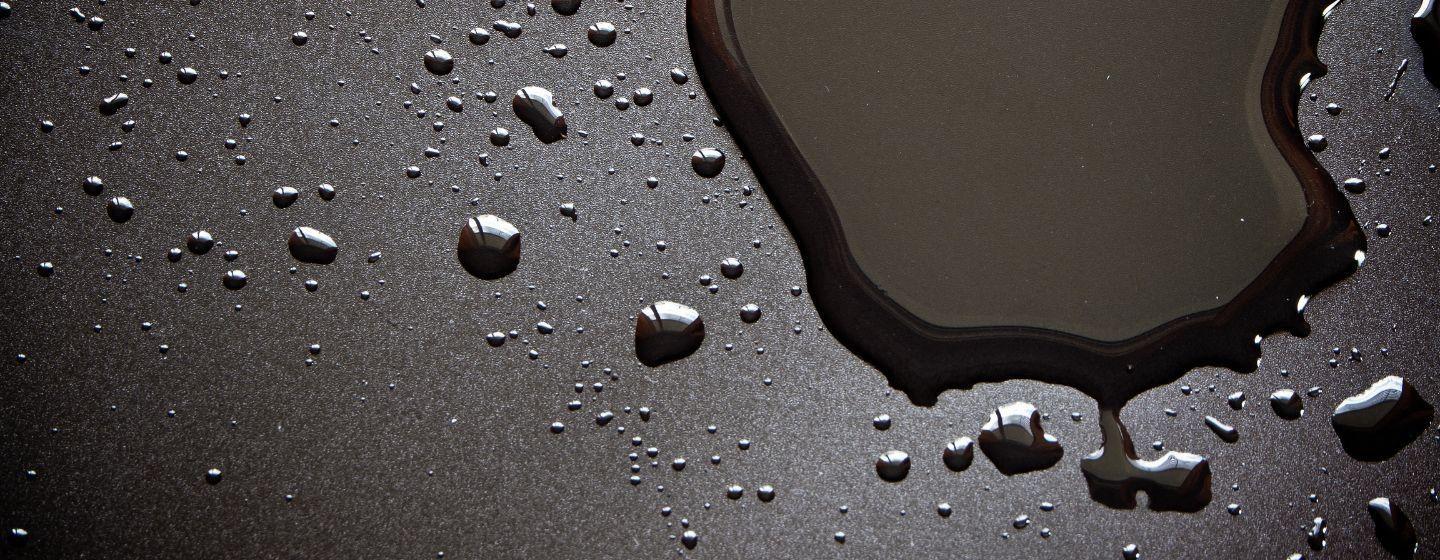Why Do Things Look Darker When They Get Wet?


If you’re driving while it’s raining, you may have noticed the road is harder to see because the pavement looks darker.
The same holds true if you walk outside after it rains. In areas where the road or sidewalk hasn’t dried yet, the pavement is darker.
What about after a workout at the gym or doing chores outside? Your sweat-soaked shirt is probably darker also.
And then there’s the pool deck. Jump out of the water, and you’ll leave a trail of dark footprints behind you.
By now you’re probably thinking, “it’s dark because it’s wet.” And you’re right, but why?
It’s all about how the eyes perceive light and how light interacts with wet objects differently than their dry counterparts.
In other words, that wet object isn’t any darker. It just looks darker to the human eye.
It’s time to talk physics, specifically refraction (the change in direction of a wave passing from one medium to another caused by its change in speed) and reflection (the abrupt change in the direction of propagation of a wave that strikes the boundary between different mediums).
First, let’s talk about how the human eye sees color.
When light hits an object, some of the light is absorbed and some is reflected. The wavelength of light, measured in billionths of meters, reflected off an object and back to our eyes is what determines the color we perceive.
So, a red shirt absorbs all the wavelengths of light except those that make up red and reflects what’s left back into the world around it. That includes our eyes.
Here’s where the water comes in.
Remember, when an object is dry, light hits the object and is reflected directly back to our eyes. The colors we perceive in that reflected light depend on the properties of the surface the light is bouncing off. And when an object gets wet, there’s a new property involved in that reflection. It’s water.
When an object is wet, the water layer causes the light to scatter in many directions. Some of the light is absorbed by the object, and some is reflected away from our eyes.
It’s the scattering and absorption of light that make the object appear darker. It’s a physics phenomenon called total internal reflection.
In other words, when rain hits a roadway or when you sweat into a shirt, a super thin layer of water coats the formerly dry material. Two things happen when light hits that coating, and a lot depends on the angle of the light as it hits the boundary.
For smaller angles of light, light that is traveling straight up and down as it meets the boundary, a small amount of light is reflected away from the boundary and doesn’t pass into the air.
But at larger angles, some of the light that does pass through the boundary from a medium with a high refractive index (such as water) to a medium with a low refractive index (such as air) loses a lot of its power to spread out and be seen.
While smaller angles of light escape the water, larger angles don’t. And that means less light is traveling into the air and to your eyes.
Now take that wet red shirt.
Because there’s a thin film of water on the material, when light hits the material, that water layer causes less of the light to be reflected into the world, including our eyes, and more of the light to be reflected or bounced back into the cloth, thanks to total internal reflection.
The water changed the angle that the light is hitting the materials. That means the water is essentially helping the material surface absorb more of the light that hits it, which makes it look like the object is darker.
The same is true for wet roads and pool decks.
They all look darker because of the thin film of water sitting on top of it. Some of the light that bounces off the pavement is reflected back at the concrete by the water layer. And because less light is passing through the water and reaching our eyes, the concrete seems darker.
Physics is fun, but I couldn’t have written this without the help of Michael Kudenov, optics expert and professor of electrical and computer engineering at NC State, and Matt Shipman in the university’s communications department.
Watch this Sci NC story for a great example of how insects use this same principle for protection.
Some creatures can be 100 times blacker than charcoal. What can we learn from them?